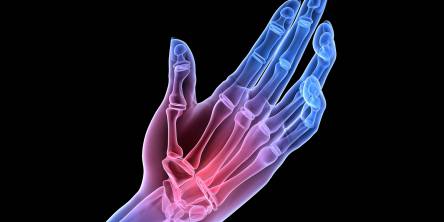3 Times You Need to Look Beyond the Anesthesia Code Range for Anesthesia Services

Anesthesia coding requires a unique skill set. A major part of that is understanding how to use the Anesthesia section (00000) in the AMA CPT® code set. But there are times when you’ll need to extend beyond those anesthesia codes to ensure proper reporting of your services. Whether you’re just starting out in anesthesia coding or are looking for a refresher, these three pointers will help.
1. Explain the Unusual With Qualifying Circumstances Codes
To show that an anesthesia service involved difficult circumstances, CPT® provides qualifying circumstances codes to report in addition to anesthesia CPT® codes. Note that if the case merits it, CPT® guidelines state that you may report more than one of these add-on codes for the same service:
+ 99100 (Anesthesia for patient of extreme age, younger than 1 year and older than 70 …)
+ 99116 (Anesthesia complicated by utilization of total body hypothermia …)
+ 99135 (Anesthesia complicated by utilization of controlled hypotension …)
+ 99140 (Anesthesia complicated by emergency conditions (specify) …).
Watch payment policy: Check payer policy for these codes. For instance, Medicare gives these codes status B on the Medicare Physician Fee Schedule, which means that payer bundles payment for these codes into other codes reported on the same date. But even if your payer bundles payment for these qualifying circumstances into other codes, experts recommend that you use the codes for tracking purposes.
2. Describe Patient Using Physical Status Modifiers
According to AMA CPT® guidelines, you should report anesthesia services using a code from the anesthesia CPT® codes list, spanning from 00100 to 01999. You also should append a physical status modifier:
P1 (A normal healthy patient)
This patient presents with minimal risks for the procedure.
P2 (A patient with mild systemic disease)
An example for this modifier may be controlled diabetes.
P3 (A patient with severe systemic disease)
This patient is expected to do well in surgery but has a condition, such as severe diabetes with vascular complications, that could potentially cause death.
P4 (A patient with severe systemic disease that is a constant threat to life)
Using this modifier indicates the patient isn’t expected to die before surgery, but it’s possible given the severity of the disease, such as congestive heart failure.
P5 (A moribund patient who is not expected to survive without the operation)
This patient is very high risk because of sickness or trauma. A ruptured aneurysm is one example.
P6 (A declared brain-dead patient whose organs are being removed for donor purposes)
This modifier is specific to cases where the patient’s organs are being kept viable for donation.
Tip: Not all payers pay extra for use of physical status modifiers. Medicare is one of those payers that accepts the physical status modifiers for informational purposes only. But it’s worth investigating which payers allow you to add units to your calculations based on the P modifier. You’re likely to add one unit for P3, two for P4, and 3 for P5.
3. Pick a Medicare Modifier to Support Payment Rate
So far, we’ve talked about two extras that don’t affect Medicare payment. But there is another list of modifiers you need to know for anesthesia coding. Medicare requires you to use the HCPCS modifiers below to show the appropriate payment rate: personally performed, medically directed, or medically supervised. Here are the modifiers:
AA (Anesthesia services performed personally by the anesthesiologist)
AD (Medical Supervision by a physician; more than 4 concurrent anesthesia procedures)
G8 (Monitored anesthesia care (MAC) for deep complex, complicated, or markedly invasive surgical procedure)
G9 (Monitored anesthesia care for patient who has a history of severe cardio-pulmonary condition)
QK (Medical direction of two, three, or four concurrent anesthesia procedures involving qualified individuals)
QS (Monitored anesthesia care service)
A physician or qualified nonphysician anesthetist may use QS, which Medicare considers informational. You’ll also need to report anesthesia time and one of the payment modifiers.
QY (Medical direction of one certified registered nurse anesthetist (CRNA) by an anesthesiologist)
GC (This service has been performed in part by a resident under the direction of a teaching physician)
The teaching physician reports GC and another payment modifier.
Tip: To dive deeper into Medicare payment and rules for anesthesia claims, review Medicare Claims Processing Manual, chapter 12, sections 50 and 140.
Bottom line: Remember to look beyond 00000 in your anesthesia code lookup or anesthesia billing software to ensure complete anesthesia coding that complies with the rules.
Similar Articles
Veins on the skin that produce swelling may indicate varicose veins. Varicose veins are a vein disorder, and their role is to return blood from the leg to the heart. The specific cause of varicose veins, a prevalent condition, is unknown.
A healthy spine is the foundation of a functioning body. It supports your frame while allowing you to bend, flex, and move more freely. However, most people neglect the importance of spine health until they have a back condition.
Whether you're having trouble moving body parts or experiencing worsening joint discomfort, an orthopedic doctor can help. They can treat anything from a minor strain to complex treatments such as shoulder replacement. The appropriate treatment from an orthopedic expert at the right time might relieve your pain and improve your symptoms in less time.
When it comes to trauma, professionals in the mental health sector readily admit that no single style of therapy or intervention is appropriate for every case or individual.
Rheumatoid arthritis (RA) is a type of autoimmune disease that occurs when the body's immune system attacks the lining of joints, causing inflammation and causing symptoms like pain and stiffness. RA usually affects both sides of the body in a similar way, but small joints of the hands and feet are often affected first, often knuckle joints of the fingers.
An electroencephalogram (EEG) is a test that measures the electrical activity in the brain. Healthcare experts utilize it to evaluate and comprehend neurological illnesses, sleep disorders, and brain damage.
So, your back decided to stage a mutiny and gift you with a herniated disc. Lovely. Now what? If you’re imagining a future filled with endless discomfort and groaning every time you get out of bed, don’t fret. There are plenty of ways to tackle a herniated disc and get back to living your best, pain-free life.
Back pain – it’s not just a matter of “I lifted a heavy box, and now my back hurts.” It’s often the result of a complex dance between our minds and bodies, with stress, anxiety, and emotions playing lead roles. If you’ve ever woken up with a stiff back after a tough week or felt your spine twinge just from reading a long email chain, you’re not alone.
Chronic pain is a medical problem that affects many people around the world. Unlike acute pain, which is a short-term response of the body to tissue damage, chronic pain lasts longer, often without obvious physical damage. It can last from several months to several years, and its consequences can affect all aspects of a person's life









